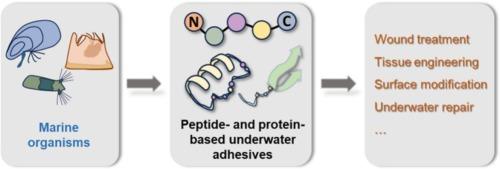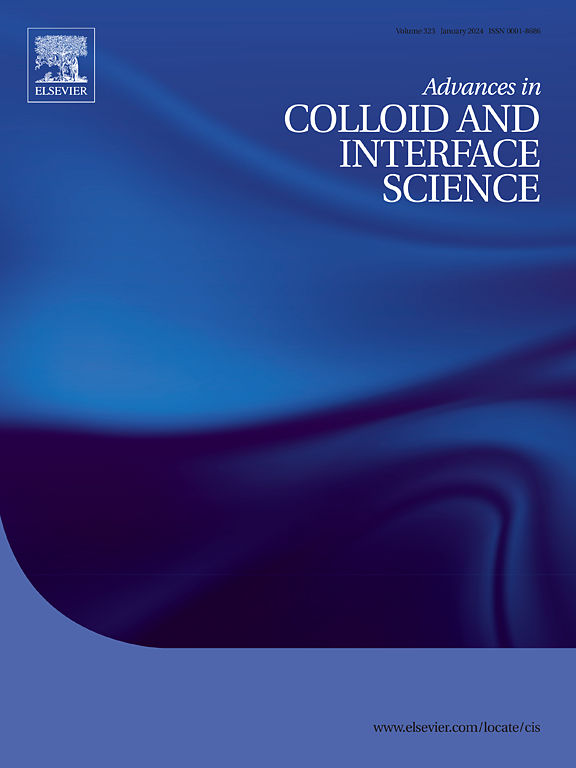基于肽和蛋白质的水下粘合剂:海洋生物粘合剂的经验教训。
IF 19.3
1区 化学
Q1 CHEMISTRY, PHYSICAL
引用次数: 0
摘要
贻贝、藤壶和沙堡蠕虫等海洋生物在水生环境中表现出强大的附着力。然而,其粘合能力的机制仍然不完全清楚,具有类似性能的人工粘合剂尚未开发。值得注意的是,大多数这些生物通过专门的基于蛋白质的结构实现对各种水下底物的强烈附着。因此,近几十年来,受这些自然生物的启发,研究人员一直致力于开发基于肽和蛋白质的水下粘合剂。本文首先综述了具有代表性的天然蛋白质介导的海洋生物水下黏附系统。然后,它提供了生物启发肽和蛋白质为基础的水下粘合剂的全面概述。此外,还讨论了这些胶粘剂在各个领域的应用。最后,简要探讨了水下黏附生物材料发展面临的挑战和机遇。本文章由计算机程序翻译,如有差异,请以英文原文为准。

Peptide- and protein- based underwater adhesives: Lessons from marine bio-adhesion
Marine organisms such as mussels, barnacles, and sandcastle worms demonstrate robust adhesion in aquatic environments. However, the mechanisms underlying their adhesive capabilities remain incompletely understood, and artificial adhesives with comparable performance have yet to be developed. Notably, most of these organisms achieve strong attachment to various underwater substrates through specialized protein-based structures. As a result, researchers have focused on developing peptide- and protein-based underwater adhesives inspired by these natural organisms in recent decades. This review first summarizes the natural protein-mediated underwater adhesive systems of representative marine organisms. It then provides a comprehensive overview of bio-inspired peptide- and protein-based underwater adhesives. Furthermore, the applications of these adhesives across various fields are discussed. Finally, the challenges and opportunities in the development of underwater adhesive biomaterials are briefly explored.
求助全文
通过发布文献求助,成功后即可免费获取论文全文。
去求助
来源期刊
CiteScore
28.50
自引率
2.60%
发文量
175
审稿时长
31 days
期刊介绍:
"Advances in Colloid and Interface Science" is an international journal that focuses on experimental and theoretical developments in interfacial and colloidal phenomena. The journal covers a wide range of disciplines including biology, chemistry, physics, and technology.
The journal accepts review articles on any topic within the scope of colloid and interface science. These articles should provide an in-depth analysis of the subject matter, offering a critical review of the current state of the field. The author's informed opinion on the topic should also be included. The manuscript should compare and contrast ideas found in the reviewed literature and address the limitations of these ideas.
Typically, the articles published in this journal are written by recognized experts in the field.

 求助内容:
求助内容: 应助结果提醒方式:
应助结果提醒方式:


